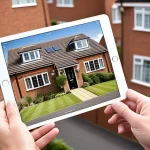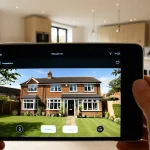Impact and Benefits of Smart Home Technology in UK Homes
Smart home technology UK offers significant advantages for traditional UK living spaces. By integrating smart devices, homeowners experience enhanced convenience, energy savings, and improved security. These benefits of smart homes extend beyond simple gadgetry, transforming day-to-day life.
How does smart technology address traditional household needs? It automates routine tasks such as lighting control, heating adjustments, and appliance management. This automation not only simplifies daily living but also promotes energy efficiency UK-wide, by reducing unnecessary power usage and optimizing consumption. For instance, smart thermostats learn user patterns, lowering energy costs while maintaining comfort.
This might interest you : What are the best UK home accessories for a modern look?
Security enhancements form another critical benefit. Smart security systems UK include features like remote monitoring, smart locks, and alert notifications. These provide peace of mind, allowing homeowners to protect their properties actively. Such systems are specifically adapted for UK home protection demands, addressing common risks with innovative solutions.
In summary, implementing smart home technology UK results in homes that are more efficient, secure, and comfortable. Embracing these benefits of smart homes encourages a progressive shift in how UK living spaces operate and adapt to modern challenges.
Also to read : How Can UK Home Living Impact Your Wellbeing?
Overview of Smart Home Devices and Systems
Smart home devices have become central to home automation UK, offering a range of tools designed to simplify and improve daily living. Common devices include smart thermostats that adjust temperatures automatically, intelligent lighting systems controlled remotely or by voice, and security setups comprising cameras, sensors, and smart locks. Voice assistants also play a key role, acting as hubs to control multiple devices using simple commands.
Innovative smart systems popular in UK homes often integrate several devices for streamlined management. For example, smart meters provide real-time data on energy usage, helping households track consumption and reduce costs. This aligns with government-led initiatives promoting energy efficiency and carbon footprint reduction.
Together, these devices transform traditional homes into connected, responsive environments. The impact of smart home devices is especially notable in UK living spaces where energy costs and security concerns are priorities. By leveraging these technologies, residents can enjoy practical benefits such as convenience, better control over household functions, and support for sustainability goals. As smart systems advance, their adaptability and ease of use continue to appeal widely across the UK housing market.
Transformation of Traditional UK Living Spaces
Smart home technology UK is reshaping UK home transformation by enabling the modernising traditional homes without stripping their unique character. Retrofitting period properties requires careful integration, respecting architectural details while adding smart systems. For example, installing discreet sensors or wireless devices preserves heritage aesthetics and avoids invasive rewiring.
Smart retrofitting brings practical benefits such as improved energy efficiency and comfort in older buildings, which often suffer from inefficiencies. Innovative solutions like smart thermostats paired with existing heating setups can optimise temperature control without altering original radiators or pipework. Similarly, smart lighting can be added using existing circuits, preserving historic features.
Case studies highlight how such upgrades allow historic homes to meet modern expectations without compromising their charm. Technologies compatible with UK building constraints help bridge past and present, making smart homes accessible beyond new builds. This transformation reflects a balanced approach, leveraging advanced tools while acknowledging the value of traditional UK living spaces.
Enhancing Convenience and Efficiency
Smart home technology UK makes home automation convenience tangible by automating daily routines such as heating, lighting, and appliance control. This automation simplifies life in UK living spaces, allowing users to schedule or remotely adjust settings, reducing manual effort and boosting comfort. For example, smart thermostats adjust temperatures based on occupancy patterns, ensuring warmth when needed and saving energy when rooms are empty.
Energy efficiency UK gains prominence as smart devices optimise consumption. Automated lighting systems turn off when no one is present, while smart plugs prevent devices from drawing standby power. These measures contribute to lower energy bills and reduced carbon footprints, directly benefiting both the household and the environment.
Practical steps for hassle-free integration include starting with essential devices—such as a smart thermostat or lighting system—and gradually adding components linked via centralized apps or voice assistants. Choosing products compatible with existing UK wiring and standards ensures smoother installation and operation. This staged approach makes smart living accessible and manageable, supporting both convenience and sustainability in UK homes.
Improving Home Security Through Smart Technology
Smart security systems UK offer vital solutions tailored to the home protection needs prevalent in UK living spaces. These systems include smart locks, cameras, and alarms that provide real-time monitoring and immediate alerts via smartphones. For instance, smart locks enable remote access control, allowing homeowners to lock or unlock doors even when away. This directly enhances convenience while serving as a strong burglar deterrent.
How do smart security systems actively deter crime in UK homes? By combining visible security cameras with alert notifications, these systems alert residents and law enforcement promptly, reducing response times. Additionally, features like motion sensors trigger alarms only when necessary, minimising false alerts and increasing system reliability.
Addressing privacy concerns is also key. UK users benefit from robust encryption and data protection protocols in devices, ensuring that personal information and video feeds remain confidential. Manufacturers increasingly incorporate features like local data storage and user-controlled sharing settings to uphold privacy standards.
In all, smart security systems UK balance advanced protection with user-friendly control, establishing safer homes without compromising privacy. This makes them essential components of modern smart home technology UK, ensuring peace of mind across diverse UK living spaces.
Overcoming Integration and Retrofit Challenges
Integrating smart home retrofit solutions into UK properties presents unique challenges due to older wiring, thick walls, and complex layouts typical in traditional UK housing. These structural features can interfere with Wi-Fi signals and complicate device installation. For example, masonry walls often reduce wireless range, requiring careful placement of hubs or using mesh networks to maintain strong connections.
How can homeowners address these integration challenges effectively? First, assessing existing electrical infrastructure ensures smart devices can be powered without extensive rewiring. Opting for wireless or battery-powered sensors helps avoid invasive changes. Professional installers familiar with UK building regulations can advise on optimal device placement and compatibility.
Product selection is critical. Devices designed for UK voltage and frequency, compatible with typical home automation hubs, reduce technical issues. Using smart systems supporting multiple communication protocols (Wi-Fi, Zigbee, Z-Wave) enhances flexibility, allowing seamless integration with legacy installations.
Specialist services exist to support UK property upgrades, offering tailored solutions that combine aesthetics, performance, and technology. Homeowners benefit from expert guidance on balancing modern convenience with preservation of property character, making smart home retrofits feasible and rewarding.
Practical Guidance for UK Homeowners
Smart home tips UK offer essential advice for homeowner technology adoption, helping residents make informed decisions. Planning a smart home upgrade starts with setting clear priorities—focus first on convenience or energy efficiency, depending on your household needs. Establishing a budget early helps avoid overspending on unnecessary devices.
Device compatibility is crucial for success. Choose smart devices designed for UK systems, ensuring conformity with local voltage, frequency, and home automation hubs. For example, selecting smart thermostats or lighting controls that integrate smoothly with existing UK infrastructure prevents connectivity issues and eases installation.
Homeowners should also consider ongoing maintenance and updates. Regularly checking device firmware and app compatibility keeps systems secure and functional. Accessing resources and support like user manuals, online forums, or professional services is beneficial for troubleshooting and optimisation.
By following these practical guidelines, UK residents can confidently adopt smart home technology UK and enjoy its many benefits of smart homes—from enhanced convenience to energy efficiency—while navigating the unique demands of UK living spaces. This strategic approach ensures smart living remains accessible, manageable, and rewarding.








